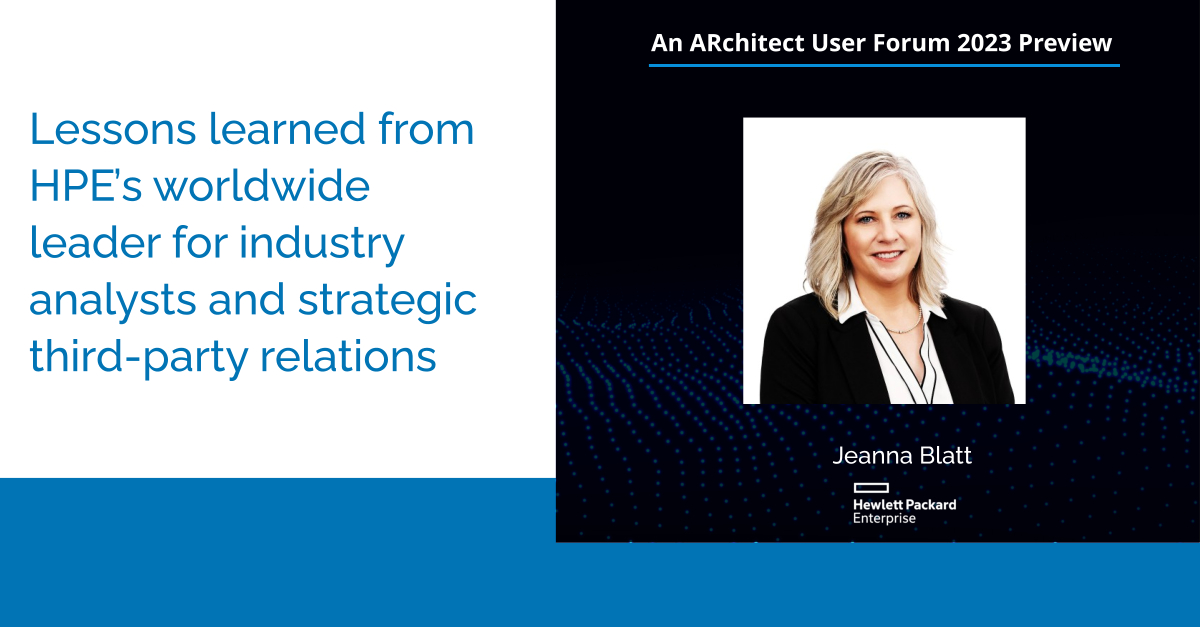When it comes to analyst relations (AR), Ludovic Leforestier has seen and done it all! A founder of the Institute of Influencer & Analyst Relations (IIAR>), Ludo has 20+ years of hands-on experience leading AR, including at IBM and Oracle, and is a recognized thought-leader in the field — frequently writing about topical AR issues, challenges, best practices and more.
In addition to currently serving as a board member for the IIAR>, Ludo is also the founder of Starsight Communications, a B2B influencer and analyst relations agency that provides insights-led AR programs and strategies for clients worldwide.
If you run into Ludo, who’s based in the UK, we highly recommend chatting him up: He’s famous for AR success stories, war stories and had-to-see-it-to-believe-it tales! In the meantime, we’re thrilled to bring you his insights via this latest Profile in AR:
Q: How did you get into influencer and analyst relations?
Ludo: It’s an interesting question. I started out in sales — and also ran marketing programs supporting sales — for a storage company.
At the time, no one was doing AR in Europe. It sounded fantastically interesting to me, though, so I dove in. That interest led me to many other places: from managing EMEA marketing and PR at a global tech company, to working with PR agencies, and more. After a while, I moved into AR full-time, managing analyst relations at IBM and Oracle, among other companies. And now, I lead analyst relations programs for clients at Starsight Communications, an agency I founded nearly two years ago.
Even though I’ve been focused solely on AR for the better part of two decades, my work has been extremely varied. I’ve seen that AR is, of course, primarily a reflection of the external audience (analysts and influencers) we work with. But AR pros also spend a lot of time — maybe even more time — communicating and coordinating with internal stakeholders and executives, and making their AR programs work within the unique context of their companies. Even though many AR programs share common goals, every business has its own stakeholders, politics, culture and DNA — so AR has different rules and operates differently, because every company is different.
Q: What led you to found the IIAR>?
Ludo: The IIAR> was born over 15 years ago from the realization that analyst relations is very much a solitary profession. Often, AR people are single contributors — maybe they’re part of a team, and oftentimes, they’re not. And although AR involves communications between stakeholders and analysts, it’s still very much a role where practitioners operate by themselves.
So, we founded the IIAR> to share best practices and foster social gatherings and interactions together. We had an initial meeting about the IIAR> vision at IBM and decided to bring two different clubs together, with great input and leadership from people including Pam Crain, Paula Schmidt and Caroline Dennington.
Today, our mission remains to enhance awareness of — and enhance the image and practice of — analyst relations. Throughout the IIAR> history, we’ve been a great forum to network and share research and best practices. We host webinars and other events, have published an AR definition and job description, and work to promote both analysts and the AR profession.
Q: How and why has the IIAR>’s acronym evolved over the years?
Ludo: The IIAR> was founded as the Institute of Industry Analyst Relations. A few years ago, in recognition of the shifting landscape, we changed to the Institute of Influencer and Analyst Relations.
I’ve always been very convinced, personally, that AR should target more than just traditional analysts. For instance, there are many influencers and “market mavens,” who offer their independent perspectives and analysis on market developments. Some have different engagement models, some people are bloggers, some are primarily on the speaking circuit.
When we talk about influencer relations, though, unfortunately, it tends to get lumped with B2C examples: like an influencer showing off shoes on a Dubai beach. B2B influencer relations is different, of course, and requires different methods of engagement. But there are still some parallels. For example, some analysts are paid to try out mobile phones. They might not do it in Dubai, but it could be at a Barcelona beach at Mobile World Congress. And they might not be on TikTok, but they’re on Twitter.
The bottom line: You need to be able to scale your AR program to address the “long tail.” Plus, it’s often a very gray area today between who’s an analyst and who’s not. But in the end, the label doesn’t really matter. As long as the individual is relevant and influential, respects an NDA, and is happy to do a fact-check, then as far as I’m concerned, they’re good to interact with.
Q: The IIAR> recently released AR Salary Survey data. Did any results surprise you?
Ludo: Several things surprised me, actually! For one, there’s a large amount of churn among AR professionals, with people moving around a lot, and increased hiring for junior roles. At the moment, there’s also an influx of people who are new to the profession.
It’s also interesting to hear about AR professionals’ day-to-day duties. Well over 80% are conducting analyst briefings, contributing to briefing content and managing inquiries independently.
At the same time, half of AR people are actually developing the briefing content and acting as spokespeople. So, you clearly see that half of AR people are active spokespeople and engaging dynamically with analysts, and the other half are probably more junior.
When we do other, separate surveys with analysts, they tend not to like it when AR practitioners just pass on information and don’t add value. In other words, they don’t like “mailbox AR.” And with half of the profession mature enough to act as spokespeople, that’s very encouraging.
Another thing I’d highlight from our recent data is that, sadly, report rankings are still the most important KPIs in AR programs, yet these don’t reflect the holistic value of analyst relationships. But the good news is that “insights gained” from analyst engagements is coming in right next to it. This is further proof that AR is very strategic in companies.
Q: Why did you decide to start Starsight Communications two years ago? How do you work with clients?
Ludo: In my career, I’ve started two AR departments from scratch at vendors, with great results. I’ve created a category. I’ve had terrific and varied experiences, and was wondering what to do next.
So I started Starsight and never looked back. It’s really interesting and rewarding to be able to help all different types of clients with their analyst and influencer relations needs. What we really enjoy is going the extra mile for clients. We bring relevant and complementary skills and really try to make a difference, both in effectively engaging analysts and influencers, and in bringing different analysts and their insights into client organizations.
We’re also very proud that, for each of the two years Starsight has existed, analysts have elected us the #2 winner for “Analyst Relations Agency of the Year.”
Q: What single thing should AR professionals be aware of today that they often aren’t? And what common traps do companies fall into, as it relates to AR?
Ludo: I think after two years of COVID, it’s more important than ever to go back to good, old-fashioned, person-to-person relationships. This can be difficult, because people are traveling less – it’s very hard to get a Gartner analyst to travel, for instance — and they have higher productivity standards. But personal relationships are incredibly important.
As for AR traps: a prime one is focusing too much on Magic Quadrants. For companies, it’s important to make sure they really want to be evaluated in landmark reports, because there are a lot of things involved. There might not be one Gartner Magic Quadrant, Forrester Wave, IDC MarketScape, GigaOm Radar, etc. that’s the RIGHT category for the vendor. We’ve also seen a lot of churn within analyst ranks, especially at Gartner, leading to MQ cancelations. Finally, there’s the question of budget for activation (reprints, promotion, etc.) and bandwidth for participation. So, sometimes it pays to focus heavily on the evaluation; in other circumstances, you might not want to put all your eggs in the same basket.
Q: In today’s tight economy, why is AR still mission-critical?
Ludo: When the going gets tough, companies can do one of three things:
- Cut their budgets and focus on the top line.
- Retrench on their core and profitable segment.
- Differentiate to accelerate.
The first two options are the easiest — and often favored by finance people. And yet, the third one is the only way to achieve a sustainable competitive advantage. What we find is that many technology vendors suffer from undifferentiated offerings. So the third option is often very important — and the good news is that analyst insights can help fix this lack of differentiation by helping those vendors find their golden niche.
Finally, the first two options also involve risk: In tough times, if AR “goes dark,” that’s a bad sign. Analysts will still write; they’ll still take inquiries with buyers. Rather than squander the time and money you’ve invested in AR, you want to remain on analysts’ radar.
***
Many thanks to Ludo for sharing his insights. If you want to reach him, you can connect with on LinkedIn.
And stay tuned for our next Profile in AR!




